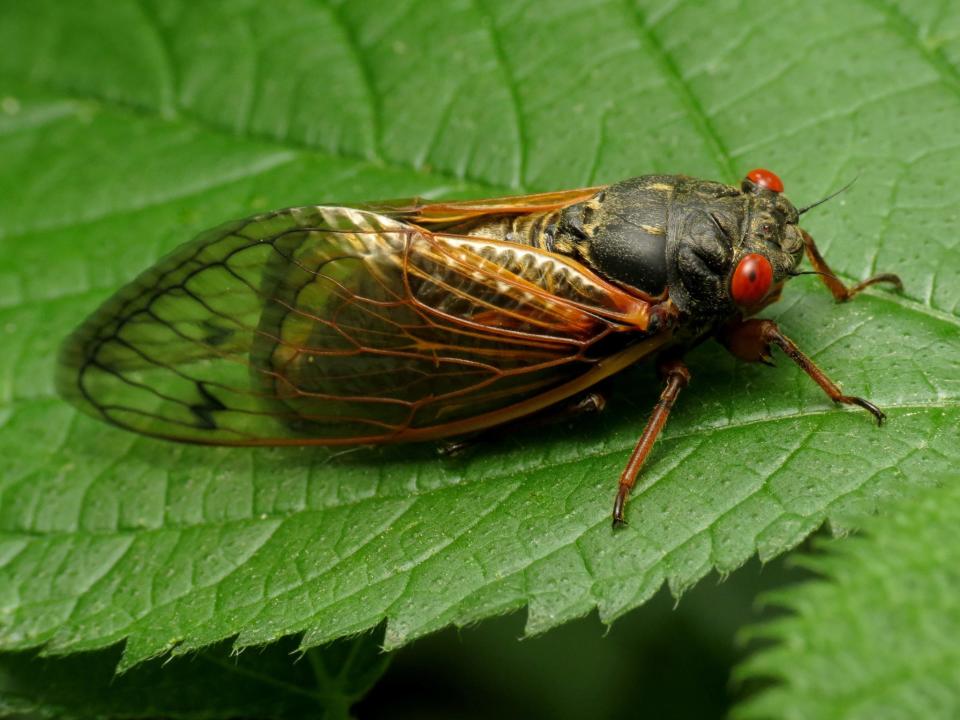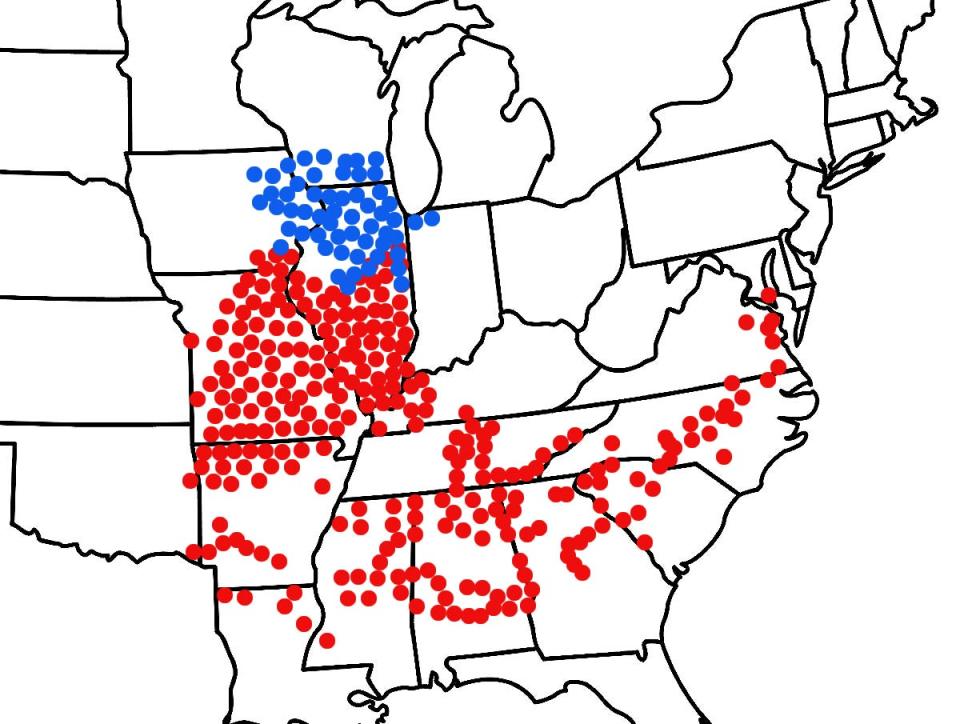Cicadapocalypse: Will there be a double brood of cicadas in Western NC this year?
North Carolina residents will hear that telltale drone early this year when periodical 13-year cicadas emerge in the state – part of a rare U.S. "co-emergence" with a second periodical brood.
The 13-year Brood XIX will emerge in 14 states across the Southeast and Midwest, and a 17-year Brood XIII will emerge in five Midwestern states around the same time, according to the website Cicada Mania.
This co-emergence will be the first time the broods have overlapped in 221 years. If you can wait 20 years, you'll be able to catch the next total solar eclipse in the U.S. in 2044. The next double-emergence of these two broods, however, is another 200 years away in 2245.
North Carolina sees some cicadas every year, but periodical cicadas are a little different. Most noticeably, unlike our black and green annual cicadas, periodical cicadas are mostly black in color, with amber wings and striking red eyes. And while they share this appearance, not all species in any given brood are the same.

The University of Connecticut's dedicated website described periodical cicada groups or "broods" as "fitting together like puzzle pieces, in both time and space." Broods aren't species or populations, but are described as regional, multispecies groupings of periodical cicadas that emerge on a common schedule.
Here's what else to know about the two cicada broods emerging this year.
When will the cicadas emerge?
Both broods are estimated to emerge beginning in mid-May and last through late June. The two broods will start to emerge when the soil 8 inches underground reaches 64 degrees. Emergences are often triggered by a warm summer rain.
This is another variation from annual "dog-day" cicadas, which emerge later in July and August.
Will both broods be in NC?
Not a bug fan? You'll be relieved to hear that North Carolina will see only the 13-year Brood XIX emerge to join our annual cicadas this summer. Cicada Mania actually lists Buncombe County as the only WNC county expected to see an emergence of this brood, according to previous Citizen Times reporting.
Brood XIX is also known as the Great Southern Brood, a title earned through its status as the largest of all the periodical cicada broods. Brood XIX cicadas have been recorded along the east coast from Maryland to Georgia and in the Midwest from Iowa to Oklahoma.

Where do cicadas live?
While different broods of periodical cicadas have different territories, they are all found in eastern and midwestern states. After hatching, cicada larvae bury into the soil, where they live until it's time to emerge. Then, the cicadas migrate to trees and shrubs to spend the remainder of their lives reproducing.
What are Brood XIX cicadas?
Brood XIX cicadas have a 13-year life cycle. This means they last emerged in 2011. The brood is estimated to emerge in a larger number of states than Brood XIII beginning mid-May. You'll hear them droning through late June, according to Cicada Mania. The Great Southern Brood will emerge in the following states:
Alabama
Arkansas
Georgia
Illinois
Indiana
Kentucky
Louisiana
Mississippi
Missouri
North Carolina
Oklahoma
South Carolina
Tennessee
Virginia
What are Brood XIII cicadas?
Brood XIII cicadas have a longer life cycle of 17 years, but will emerge in a significantly smaller area. They last emerged in 2007 and, like Brood XIX, their emergence this year will begin in mid-May and end in late June. Brood XIII will emerge in these states:
Illinois
Indiana
Iowa
Wisconsin
The brood may also appear in Michigan, Cicada Mania says.
While a few states will see emergences of both broods, they won't overlap significantly in any area. Researchers say this means that, while the 2024 co-emergence is a rare occurrence, the density of cicada populations will remain the same as any other periodical cicada emergence year.
The Springfield, Illinois, area is the most likely in the country to see contact between the broods, and even in this area, while there may be scattered forested areas in which both broods are present, there will be no broad overlap.
Iris Seaton is the trending reporter for the Asheville Citizen Times, part of the USA TODAY Network. Reach her at [email protected].
This article originally appeared on Asheville Citizen Times: Cicadas in 2024: Periodical Broods XIII, XIX set to emerge in US
